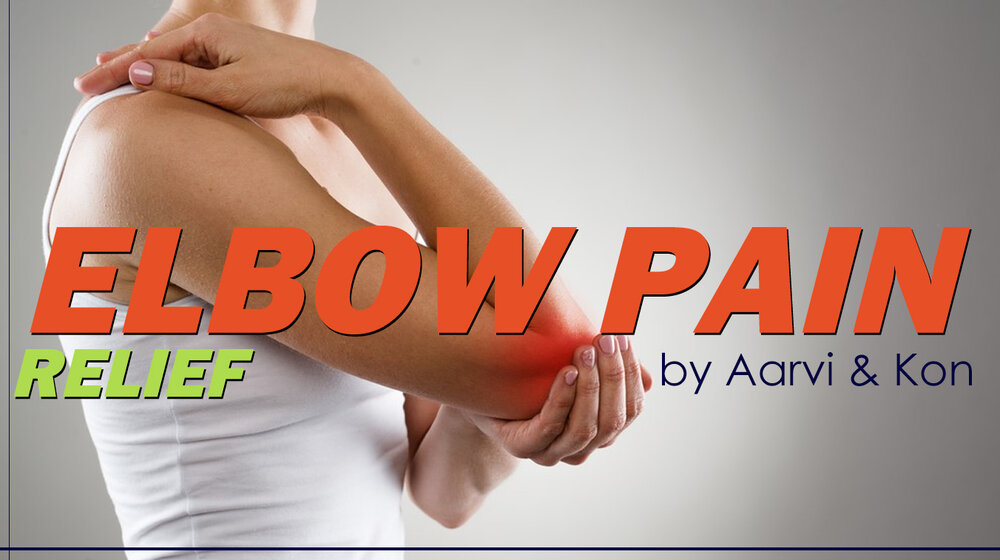Elbow injuries can present in any age group and arise from any component of the joint including tendons, bursae, bones, or nerves. The elbow joint can be an easily dislocated joint, especially in children (‘pulled elbow’).
Elbow is very prone to a tendinopathy occurring (lateral and medial epicondylitis). It is one of the most common sources of medical consultation for non-traumatic elbow disorders, because it can result from a number of popular sports and activities of daily living.
The elbow is the joint in the upper body that can take a lot of the load because it is the middle joint between the shoulder and hand.
Rheumatoid (inflammatory), post-traumatic, and primary osteoarthritis are three primary patterns of arthritis affecting the elbow.
What Causes Elbow Pain Without Injury?
Several factors usually combine to cause elbow pain which include –
- Overloading
Any activity that involves repetitive, especially high level resistance activity over a prolonged period of time without adequate rest places a high level of stress on the muscles, ligaments and joints that make up the elbow joint.
The most common type of elbow pain is called “Tennis elbow” and results from overuse of the forearm muscles that are important in stabilising the wrist during sports such as tennis.

However, this is a common condition that also affects many people who participate in work or recreational activities, such as plumbers, painters and carpenters whose work involves repetitive and strenuous use of the forearm muscles
- Weakness & Abnormal movement patterns
If the body is weak in the areas that influence elbow movement such as in the wrist or even the shoulder muscles, abnormal movement patterns and weakness in these areas may result, leading increased stress and eventually pain across the elbow joint.
What Does Tendonitis In The Elbow Feel Like?
Elbow pain can be variable.
It may feel like an area of sharp pain or a dull ache on specific movements that involve activities such as gripping and lifting.
The pain may be localized around the elbow joint area or even refer down the muscles of the forearm to the level of the wrist.

In addition to pain, a sensation of muscle tightness is also a common occurrence when using the hand to grip, hold or manipulate objects.
Also in most cases pain does not improve with rest. As when you return to your normal activities you are only going to overuse that tendon again.
When Should You See A Doctor For Elbow Pain?
- If your elbow pain is not improving or deteriorating
- Pain and weakness are starting to spread to other adjacent areas of the body such as the wrist and shoulder
- Symptoms are starting to disrupt activities in everyday life

What Happens If Tendonitis Goes Untreated?
Tendonitis is nowadays referred to the umbrella term tendinopathy due to the causes of the injury.
Untreated tendinopathy can develop into a degenerative tendon and this can cause permanent degradation of your tendons. It also can cause a tendon rupture will require surgery to fix.
A degenerative tendon unfortunately can not return to its normal dense fibrous connective tissue. When it reaches this stage all you can do is manage the pain and symptoms to get through the activity required.
Therefore it is vital to get on top of a injured tendon straight away.

How Do You Treat Elbow Pain?
It will depend on the kind of injury sustained and the reason why it has occurred. In most cases finding the weakness or the cause can help in relieving the elbow pain significantly as most elbow pain injuries occur over time.
So changing the technique of making the area that is overworking work less due the weakened muscle being strengthened will help in reducing symptoms over time.
In most cases looking proximally from the elbow i.e. the shoulder, neck and upper back region can show a big weakness leading to the elbow to be overworking which overtime causes injury or pain.
A great tool is the shoulder big 3 from Andrew lock which we have discussed in previous blogs. Another great exercise in the latter stages is the zottman curl to help strengthen the elbow flexors and forearm extensors.

Also if you are having a tendon related pain in the elbow the best way to treat that would be due to decreasing the stress on the elbow whilst following Jill Cook’s protocol in tendon rehabilitation. She is one of the leading therapists in tendon rehabilitation.
Initially you would need to build on improving the load capacity and that is completed through iso-metric loading then adding in strengthening exercises through eccentric work then working through the full range of motion.
Hope this blog post can give you an idea on elbow pain and what happens if it goes untreated and what are certain things to watch out for or include to prevent any further elbow pain.
The most important thing to do is to find out why the pain is occurring and then strengthen the area especially the area that is not pulling its weight.
Special exercises prescribed by your Physio are often required to alleviate the pain and prevent a recurrence.
ProPhysio+ are trained and experienced in the treatment of knee pain and will work closely with yourself to overcome this painful area.

